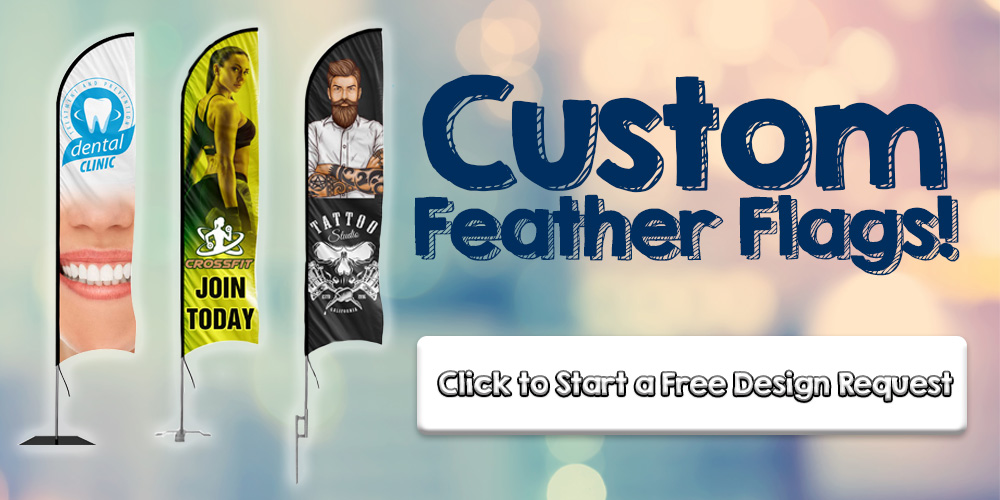The Basics of Vector Format Files
So, what is a vector format? In the world of large-format printing and graphics designs, the word “vector format” is often thrown back and forth. All of our custom feather flag designs are designed using Adobe Illustrator or Photoshop. Our preferred software is Adobe Illustrator since it allows us to create small files that are fully vectorized and easy to email. Before we describe what a vector file is and how it is useful, let’s go over some of the most common vector formats.
The above image shows the five most common vector file formats. AI and EPS formats are the most common and preferred formats, with AI being more popular than EPS. PDF files tend to work most of the time but can become problematic if the artwork is not layered. The icon with the Internet Explorer logo is an SVG file. SVG vector files work great for clip art that is not very detailed. Examples include solid-colored logos, USA flags, text only, and other simple graphics.
The file on the far right with a small green pencil logo is a Corel Draw file. Vector files, such as CDR files, are less common because they require specialized software. However, they are highly useful because they can maintain extremely small file sizes.
Is My File a True Vector File?
Wondering what a vector file format is? Typically, any of the formats listed above are true vector files, but sometimes the files end up being flattened images saved into a vector file. Flattened images are graphics that have been combined into a single layer. These types of files are hard to work with and typically do not allow us to re-scale for large-format printing or make other changes to the layout.
The image below shows what the look of a vector format is when it is opened. Vector files should have several layers under the layers tab. In the image of what a vector file is below, you can see five layers. These layers include the logo on top, the “Community” text, and the double-sided 12ft banner flag template. These make up the layers of this vector Adobe Illustrator file. The text and logos themselves also break down into smaller layers, but we will avoid discussing those to keep things simple. When a file is a true vector file, we can change the layout as we like. In the below image, we can move the text anywhere we want or change the colors and size without compromising the image quality.
Adobe Illustrator is required to open a vector file. If you do not have access to that program, you can send us your files, and we can review them for you. We do not charge for layout services or file inspections. Click Here to submit a file to us.
After reading this brief explanation of what a vector file is, we hope you now have a clear understanding and no longer need to ask, “What is a vector format?” In short, vector files allow us to print extremely large custom feather flags and vinyl banners without destroying your artwork. Standard images would blur or turn into jagged pixelated squares, but vector formats will retain their sharpness no matter what size we make them.
If you’ve been putting off purchasing outdoor promotional flags, then now is the time to get the ball rolling. View our customer banner flags today.


